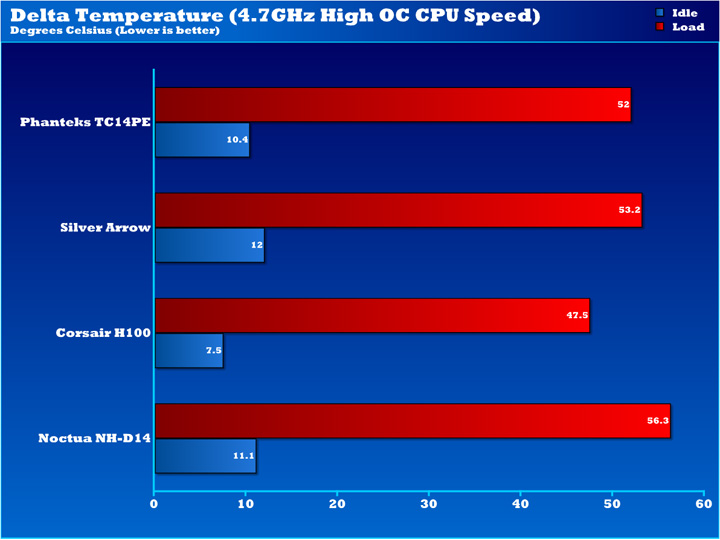Phanteks PH-TC14PE Dual Tower CPU Cooler Review
Luke Hill / 13 years ago
4.7GHz Overclocked CPU TemperaturesWhen we observe the facts these cooling ‘big boys’ are eating the 4.4GHz overclock for breakfast (albeit while getting heartburn by lunch), we decided there was need for an even higher overclock to separate the men from boys, the high end from the extreme, the failures from the champions.
With our goal to provide realistic results of what end users are likely to be able to achieve and successfully run with their processors, we decided a dynamic 4.7GHz overclock was a great frequency to aim for. Upping the 2600K CPU core voltage to a BIOS set 1.340V which peaked at 1.40V under load conditions, this would be perfect for testing the overclocking headroom available with these heat dissipation monsters. The idle temperature will remain low due to the dynamic overclock’s ability to decrease the multiplier under low CPU load condition. This is different to our static 4.4GHz overclock.
Firstly we regret to say that we were unable to show the Corsair H80 CPU cooler’s results at this frequency due to an absence of the required data.
Now that the heat is really turned up we see the PH-TC14PE’s results produce clear daylight between the results of its Noctua and Thermalright air cooling competitors. Depicting a load temperature result of 52oC above ambient, the Phanteks PH-TC14PE is perfect for 24/7 use at high frequencies and CPU voltages such as the ones tested here. The P.A.T.S and C.P.S.C technologies seem to be doing the trick here as Phanteks have the best performing dual tower air heatsink currently on the market according to our results. What is even more impressive is that the Phanteks cooler has on average, the lowest fan RPM of all four of the contestants. In all fairness, every cooler tested here shows decent enough performance to be considered for 24/7 use, but as always, the cooler the better.




















